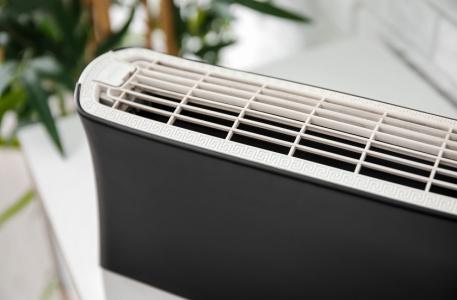
Before You Buy: 6 Need-to-Knows about Air Purifiers
Whether you suffer from seasonal allergies, live with pets, or just want to improve your home’s air quality, you might want to buy an air purifier—or add units throughout your home.
Most portable air purifiers operate similarly: a fan draws air across a filter to clean it. Pretty simple, right? But if you’ve ever shopped for an air purifier, you know the alternatives quickly become mind-boggling!
Here are several essential things to know before you shop.
1. Performance metrics
Instead of trusting manufacturers’ claims, it’s helpful to rely on performance metrics from the Association of Home Appliance Manufacturers (AHAM), which tests and measures air cleaners’ efficiency based on Clean Air Delivery Rates (CADR)—the volume of clean air that a unit produces on its highest setting.
If a product has an AHAM Verifide seal, you’ll know it’s been independently tested, and you can easily compare units’ Clean Air Delivery Rates.
Air purifiers tested by AHAM receive CADR scores in three categories: smoke, pollen, and dust. If, for example, you’re primarily interested in improving indoor air quality during allergy seasons, you’ll probably want to focus on pollen scores.
2. Types of filtration
Most indoor air contaminants are invisible to the human eye, but their sizes differ dramatically on a microscopic scale. For example, coarse particles like pollen and most pet dander are substantially larger than finer particles, such as gas emissions from smoking or cooking.
Most air purifiers can easily capture larger particles. But to trap the finest contaminants, look for units that use a high-efficiency particulate air (HEPA) filter. Note that some devices will say “HEPA-type” filter, which means it hasn’t been tested against HEPA standards.
Many units use several filtration layers sandwiched together. For example, some have a washable pre-filter that traps larger particles before air flows through a finer filter.
You may also find units with activated carbon or charcoal filters to help trap gases and odors. And some manufacturers add an ultraviolet light, although the effectiveness of this feature isn’t well proven.
3. Limitations
Air purifiers can only collect airborne particles. Therefore, any dust, dander, and other contaminants that have settled on your floors, upholstery, or furniture must be removed in other ways, like vacuuming, dusting, sweeping, or washing.
4. Noise
Some air purifiers generate considerable noise, especially when the fan runs on higher settings. Consider the decibel ratings in the product specifications if you prefer a quiet unit.
Another option is to purchase an air purifier that substantially exceeds your space requirements. That way, you may thoroughly clean your indoor air using the lowest, quietest fan setting.
5. Maintenance tasks
Like vacuum cleaners, air purifiers excel at collecting small, unpleasant substances in our homes. It’s weirdly pleasant to see how quickly dirt accumulates!
But air purifiers will perform better and last longer if they’re wiped down and vacuumed periodically—both the exterior ventillation slots and any dust within the unit. If there’s a washable pre-filter, be sure to clean this too as often as recommended or needed.
6. Operating costs
Don’t ignore a unit’s operating expenses when shopping for air purifiers, since this reflects the actual cost of owning and using any appliance.
If you want consistently clean indoor air, it’s essential to run one or more air purifiers constantly. Of course, variables like fan speed settings and local electricity rates will impact your actual cost, but a rough monthly estimate is $5-$10 per unit.
To identify some of the most energy-efficient air purifiers, check Energy Star’s ratings.
Additionally, be sure to factor in the cost of replacing the filter. Filter prices vary widely but can easily add $50-$100 to an air purifier’s annual operating cost.
